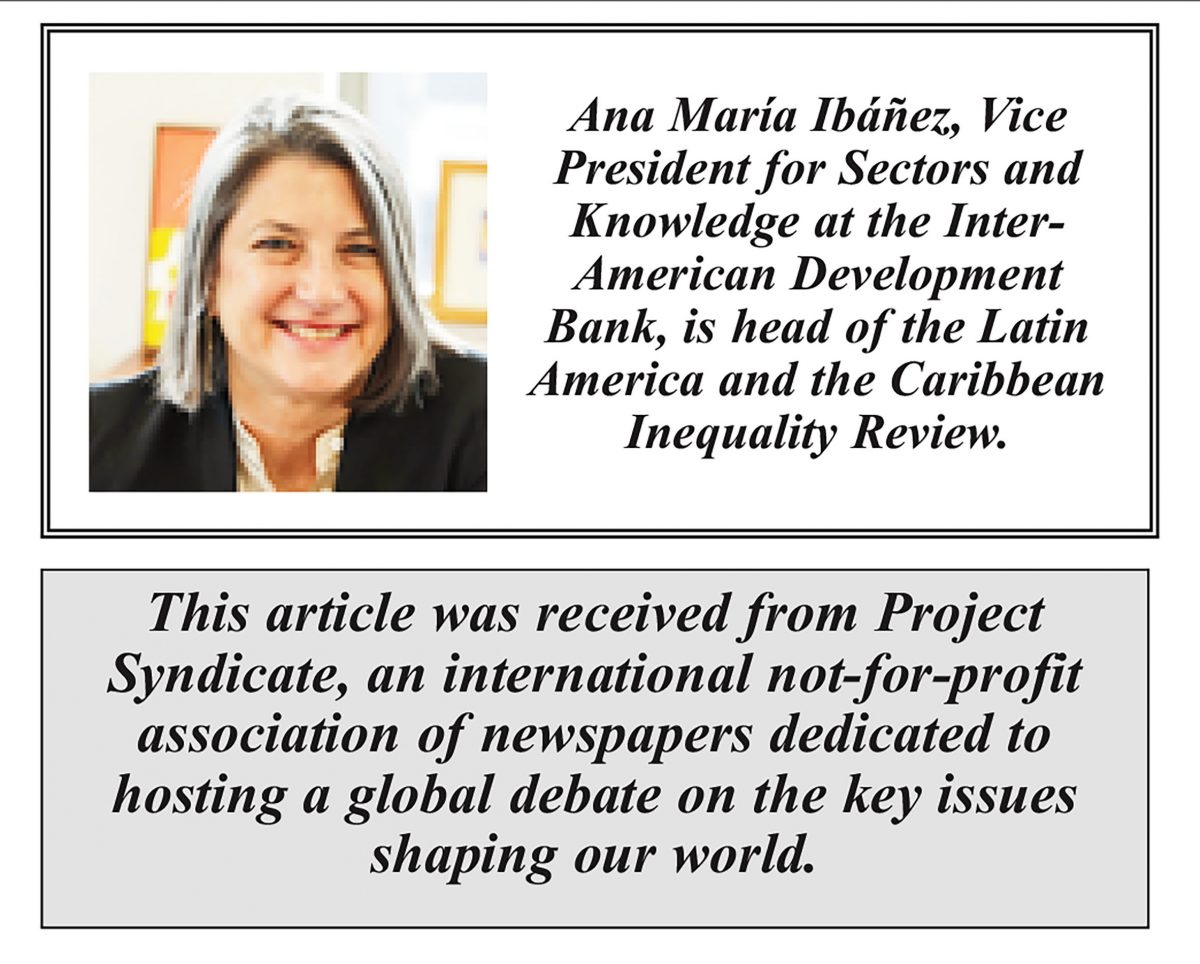WASHINGTON, DC – Nearly everyone agrees that the unequal distribution of income, wealth, and opportunities in Latin America and the Caribbean (LAC) has hindered efforts to build cohesive societies and robust democracies, as well as frustrating the ambitions of young people. But efforts to close the gap between rich and poor have fallen short, and progress has stalled. Governments urgently need better evidence on how to remedy this longstanding problem.
To this end, the Inter-American Development Bank has teamed up with the London School of Economics, Yale University, the Institute for Fiscal Studies, and academics from more than a dozen leading universities to launch a comprehensive reconsideration of inequality in LAC. The project’s initial research – including critical reviews of the existing literature, fresh data, and new analyses – has already shown that inequality in the region is neither as predictable nor as static as many believe.
For starters, LAC is not uniformly unequal. Some countries, such as Brazil, Colombia, Guatemala, Honduras, and Panama, have extremely high income inequality, whereas others, including Bolivia, the Dominican Republic, El Salvador, and Uruguay, have income disparities similar to that of the United States.
Moreover, far from being a fixed feature of LAC societies, inequality has fluctuated over time. In most countries, it began to rise rapidly in the 1970s, peaked in the 1990s, and then began to drift downwards. Inequality in the region today is lower than it was three decades ago, owing to educational gains (which narrowed the wage gap), commodity-fueled economic growth, and a host of government social programs. But it has essentially plateaued at unacceptable levels since 2014, when economic stagnation set in across the region.
A study tracking the evolution of inequality since 1980 until today shows that this broad pattern hides significant variations. For example, Bolivia, Brazil, Chile, and Peru significantly reduced inequality between 1980 and 2010, even though their levels remain high compared to other countries at a similar stage of development. By contrast, inequality has steadily increased in Costa Rica over this period. The fatalistic assumption that the entire region is cursed by structural inequality that is impervious to policy interventions should be abandoned.
The project has also revealed that wealth inequality in the region seems to be more deeply entrenched than income inequality. Although data are still quite limited, one study finds that in Chile, Colombia, and Uruguay, around 1% of the population controls 37-40% of total wealth, while the poorest half of the population controls only one-tenth. Moreover, many low-income households have negative equity, because their outstanding debts are greater than the combined value of their home, vehicles, and other assets.
There is also new evidence that the opportunities and potential income of children in the region tend to mirror that of their parents, implying low levels of intergenerational mobility. One study shows that between 44% (Argentina) and 63% (Guatemala) of current income inequality in nine LAC countries is explained by “inherited” factors. Among the variables that contribute to the persistence of inequality across generations are being born in a low-income areas, belonging to an ethnic minority, and having parents with limited schooling or low-paying occupations. But here, again, the picture that emerges is more nuanced. In countries with a history of slavery or oppressing indigenous peoples, racial or ethnic factors predict much lower levels of intergenerational social mobility.
Finally, geography matters – but not always in predictable ways. The fact that 80% of the LAC population lives in cities, for example, has reinforced the assumption that rural dynamics have little effect on income inequality in the region. But new evidence suggests that agricultural income gaps, owing largely to the low labor productivity of small farms, explain between 11% (Uruguay) and 58% (Bolivia) of overall income inequality in nine countries.
So far, the project has confirmed that inequality in LAC is unacceptably high, while also demonstrating its fluidity and responsiveness to factors that can affect the degree to which it is “inherited.” Armed with this nuanced understanding, policymakers should abandon some approaches to the problem, refine others, and test entirely new strategies that are more tailored to their country’s specific needs. For example, countries such as Colombia and Peru, where many workers have informal contracts and thus pay little or no tax, would need a different set of policies for their tax and pension systems compared to countries such as Chile and Uruguay, where a larger share of the workforce contributes to pensions and social security.
While traditional strategies such as expanding and improving the quality of education and offering cash assistance to low-income households can be effective, they are not sufficient to reduce inequality in all settings. To achieve this, LAC governments must promote economic growth that can generate more productive (and formal) jobs and adopt a new generation of fiscal policies that give everyone a seat at the table.
Copyright: Project Syndicate, 2024.






